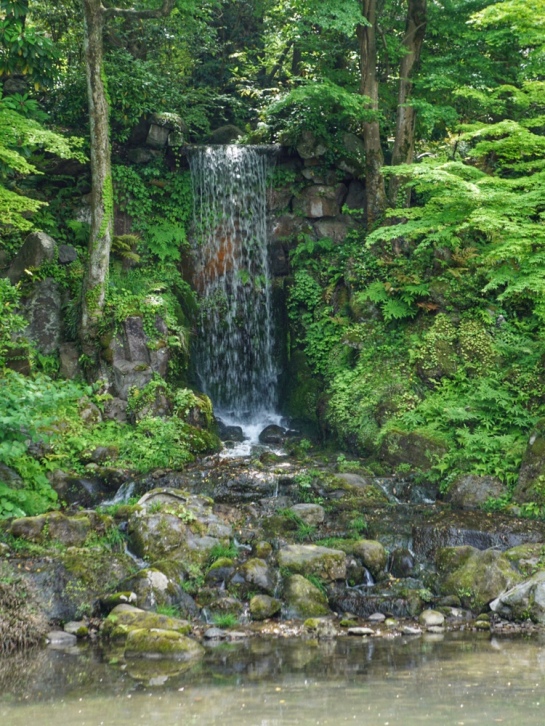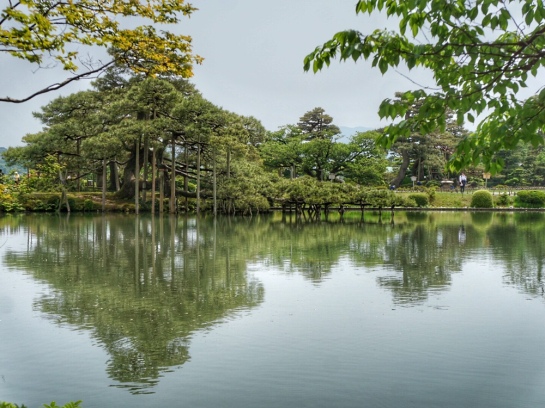Japan: a day out in Kanazawa
Armed with a 500 yen day bus pass, we started off in Kenroku-en Garden, one of the most famous gardens in Japan.
Kenrokuen means “Garden of the Six Sublimities”, a term taken from ancient Chinese literature to describe the six essential features of a perfect garden. To create a sublime garden, the gardener must incorporate spaciousness and seclusion; artifice and antiquity; and waterways and broad views.
Some of the features include:
Gangkou bashi, The Flying Geese Bridge.
The word gangkou means “flying in the formation of geese”. Eleven Tomuro stones (local red andesite) are placed across the water just so, as stepping stones.

The care of trees
There is evidence everywhere of the care that Japanese arborist take to protect the longevity of trees.
In winter, the technique called Yuki Tsurugi uses bamboo poles and ropes to protect trees and shrubs from heavy snowfalls.
The Kotojitoro Lantern

Midoritaki Waterfall

We participated in a communal tea ceremony at Shiguretei Tea House inside a tatami alcove before a last view of the irises and Kasumigaike Pond.

Kawazama Castle and its neighbouring Gyokusen inmaru Garden are just across the road from Kenroku-en Garden.
After lunch it was time for a little reflection at a museum dedicated to the Buddhist philosopher, D T Suzuki.

Much of the afternoon was spent in the Higachi Chaya district the home of historic tea houses and entertainment venues and geisha.
Kanazawa is a sleek and modern city, with an impressive new railway station, built to accommodate the arrival of a Shinkansen service.
We ended the day nearby the station in a sushi station complete with tablet ordering and bullet train delivery, where the pile of plates were scanned to produce the bill at the end of the meal.






















